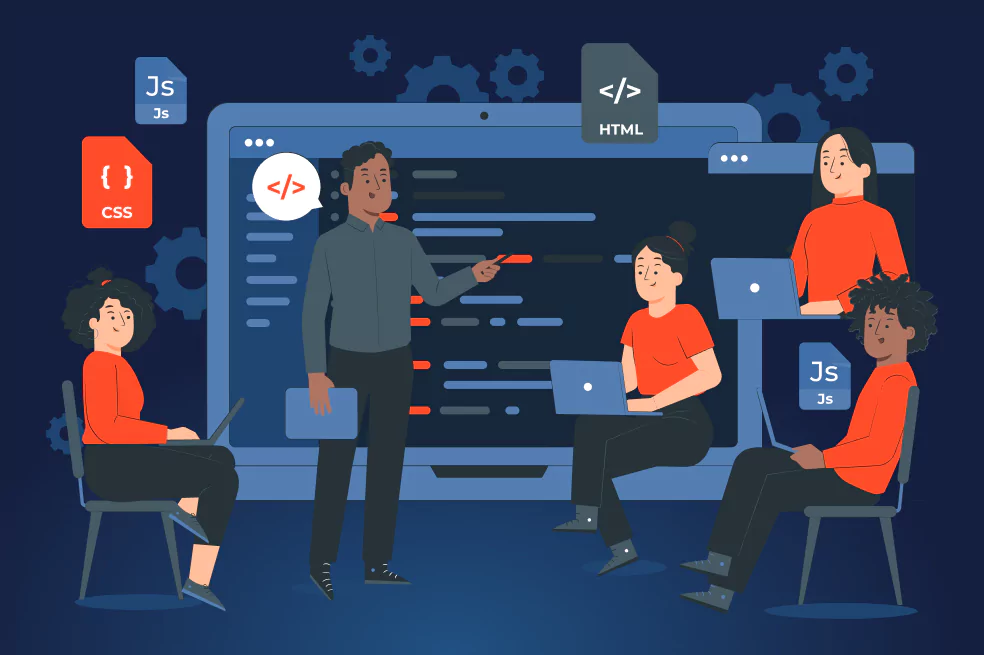How much does it cost to develop an app? It’s like asking about the price of recording a music album. You can make music using your iPhone for free or you can rent the Hansa Studio, where Depeche Mode produced their major hits, spending half a million dollars.
The right questions to ask here are what factors are affecting the price and how you can reduce your expenses without risking the software quality. We at JatApp have been building mobile apps long enough, so we’d like to share our personal experience about cost estimations and ways to save your resources on development.
Factors influencing the mobile app development price
The cost of developing a mobile app widely varies and depends on various things. Let’s take a look at the most common factors influencing the final price.
Functionality
The rule of thumb is that the more features you have in your app, the more hours of work your team will need to spend in order to build it. The app development price will rise accordingly, since the project cost is calculated on a time basis. A simple app that takes less than 700 hours to develop may cost approximately $32,000, while the expenses for a more sophisticated solution built for 2,000 hours may reach $72,000, if not more.
When you think about how many Benjamins it’s going to cost, you need to consider how this feature will be implemented. For instance, in case of a forgotten password, you can enable users to change their password in the application. Another option of implementing this app feature is to request users to click on the link they’ve received in the email.
Example of the password reset feature
The latter version is far more elaborated, since you need to create a separate page to let users enter their email address for password resetting, create an email with the password resetting link, and create a dedicated page where users change the password once they click the link. Even though each of these steps isn’t complex by itself, building such functionality requires additional time and therefore is more costly.
Some features may indeed require more complex tech-stacks and algorithms, which is why they tend to be more expensive. Gaming apps, for instance, with high levels of animation or FinTech products that require high levels of security are typically more costly due to their complex functionality.
As an example, our client from the FinTech industry asked us to develop a finance management application called Splitzy. One of the features that was particularly time-consuming to build was the e-wallet with the two-factor identification. This core feature lets users safely make payments by entering a secret code.
Splitzy app functionality
Some complex apps require customization. Customization is a time-consuming process where software engineers write new codes to deliver unique features needed for the application. This means a thorough quality assurance process of custom modules, which leads to greater expenses as well.
Developer’s hourly rate
Another factor impacting the mobile app development cost is the developers’ hourly rates. Your expenses on the mobile app may widely vary depending on the engineers’ level of expertise. In the United States, a senior software developer would ask approximately $90 per hour for their services. Meanwhile, the salary of a junior engineer is almost two times lower, equating $55 on average. It is worth noting that these numbers show how much coders are paid for their work, excluding administrative costs, employees’ benefits, and other overheads.
Developers’ roles you need for your project also matter when planning the budget of your mobile app. Augmented reality software developers are the highest paid engineers in the US, closely followed by cybersecurity and big data developers. However, you don’t need to think of this statistics as an absolute truth. For example, a front-end developer building the core product can have higher wages than all these three types of engineers.
Developers’ annual income in the United States by their type
Platforms
To build an app for iOS is generally less expensive compared to Android due to less number of devices and operating system fragmentation. You’ll need more resources to design an app that works seamlessly on a variety of Android devices. By contrast, all processes are typically more streamlined in the iOS platform, since you have to build a solution for Apple’s devices only.
For example, iPhones and iPads have standardized screen sizes, while Android devices have a wide range of screen sizes. As a result, the Android development team needs to work more on coding and app design to ensure proper functionality and compatibility across all devices.
Screen sizes of popular Android mobile devices
There are also many Android operating system versions on today’s market. This means that security updates are made at different times, which makes it difficult to build and support Android apps.
Besides, you’ll have to allocate more resources to set up proper testing for different Android devices. Building a solution is not a one-time event but an ongoing process. Making sure that your app always functions bug-free is important to stay competitive on the market. This naturally translates into additional costs on a regular basis.
Last but not least, iOS engineers use Swift, a programming language created by Apple, which usually requires less coding work than Kotlin and/or Java, languages used by Android software developers. Again, less engineers’ work means less time and money spent on the project.
3 proven ways to reduce app development budget
Once you know what goes into the price, you probably start wondering what you can actually do in order to wisely manage the budget for mobile app development. Starting with a minimum viable product (MVP), using cross-platform technologies, and outsourcing are some of the proven ways to cut the cost to build an app while not compromising its quality.
Start with a minimum viable product (MVP)
Building a minimum viable product (MVP) first is a reasonable thing to do, if you want to reduce your development costs. An MVP refers to an initial product version with the core features only, which is released to approve the app idea early on in the development lifecycle.
Starting with an MVP will help you to obtain end users’ feedback as soon as possible to make necessary changes. This allows app development teams to avoid costly and unnecessary work. Many businesses opt for MVP development to make sure that there’s demand for their solution and clients will be willing to pay for it.
Ideally, building an MVP takes 2-3 months of mobile app development process. The team often includes several full-time developers, designers, a product manager, and a project manager. During this project stage team members concentrate on the product strategy and the implementation of the fundamental app features. Some cost estimates for an MVP approach $30,000-50,000.
At JatApp, we begin every project with an MVP to test the product idea. One of the perfect examples of MVP effectiveness is our case of a content management solution platform. Our client from the Middle East needed the MVP to validate the Government initiatives. MVP development helped not only receive approval from the delegation but release the app on time and within budget.
Content management solution provider functionality
Use cross-platform technologies
Cross-platform app developers use a single codebase to build a solution for both Android and iOS. Cross-platform apps tend to be cheaper to build because of hiring one software engineer instead of two developers — one for Android and one for iOS. Therefore, cross-platform requires less time for development and quality assurance testing.
However, cross-platform might not be the best solution when working on apps with complex designs. 3D effects and complex animated features are hardly possible with this technology. In fact, most cross-platform applications don’t have access to inbuilt features, unlike native apps, which makes the user experience less pleasant.
Outsource
Outsourcing can lower the cost of developing a mobile app compared to hiring in-house developers. In-house team members come with maintenance costs, like rent, hardware, employee benefits, insurance, and similar. Besides, if you need to change the technology, you should alter the team structure and provide training to them, which is also a considerable expense. By contrast, outsourcing allows you to cooperate with a team of experts without any management troubles.
Aside from that, the engineers’ rates, say, in the United States or any country in Western Europe, will be significantly higher compared to Eastern European countries. American developers will ask twice more for their work compared to coders in Ukraine with the same level of expertise and seniority. It goes without saying that high programmers’ rates mean that you need to bear higher project expenses. Plus, when you outsource the project, developers’ rates will also include the standard margin that vendors want to get.
For your convenience, we’ve made a table with mobile app developers’ hourly rates in different countries.
Based in Ukraine, JatApp allows customers to cut down their app development costs by up to 60% in comparison with the Western markets.
What’s next?
Now that you know the average cost to develop an app and understand how to save resources without sacrificing the product quality, you may start looking for an appropriate engagement model to adopt. If you opt for outsourcing your project to a vendor, you should make sure that your partner is both reliable and experienced.
JatApp has been developing mobile applications since 2015. During these years, we have won many awards, being acknowledged as one of the top 1,000 outsourcing providers in the world and as an agency with the top mobile app developers according to Clutch. Our company has more than 100 development teams, offering access to the largest pool of tech talents in Eastern Europe.
If you’re ready to start your project, get in touch with us to discuss your requirements and business needs.







